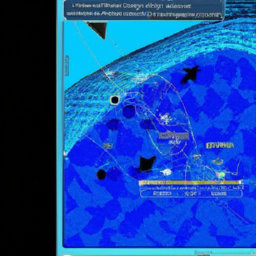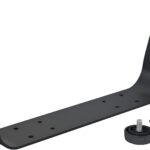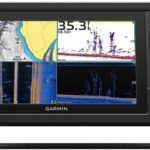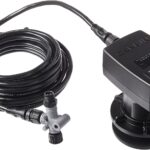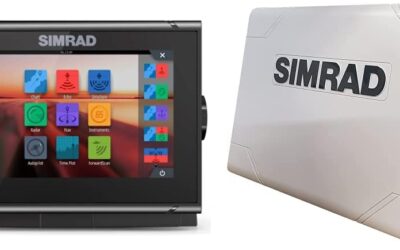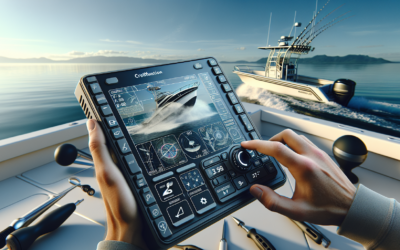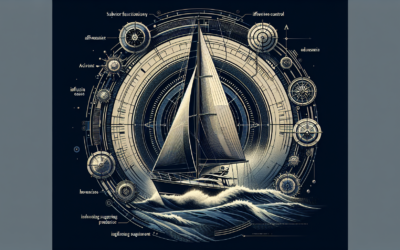Are you an avid fisherman looking to enhance your fishing skills? Look no further than Wave Science: The Basics of Sonar Waves in Fishing. This innovative product is designed to help you understand and utilize the power of sonar waves when out on the water. With its easy-to-understand explanations and practical tips, Wave Science will revolutionize the way you fish, allowing you to locate and catch more fish than ever before. Say goodbye to guesswork and hello to a more successful fishing adventure with Wave Science: The Basics of Sonar Waves in Fishing.
What are Sonar Waves?
Definition and Explanation
Sonar waves, also known as sound navigation and ranging waves, are a type of acoustic wave that is used for underwater navigation, communication, and detecting objects underwater. Similar to how bats use echolocation to navigate and find prey, sonar waves work by emitting sound waves into the water and then analyzing the echoes or reflections that bounce back.
How do Sonar Waves Work?
Transmission of Sonar Waves
Sonar waves are transmitted through the water using a transducer, which is often mounted on the hull of a boat or submerged in the water. The transducer converts electrical energy into sound energy, emitting a series of sound pulses into the water. These sound pulses consist of high-frequency waves that travel through the water at a speed of approximately 1,500 meters per second.
Reflection of Sonar Waves
When these sound pulses encounter an object in the water, such as fish or underwater structures, they bounce back or reflect off the object’s surface. The reflected sound waves, or echoes, are then picked up by the sonar system’s transducer. The time it takes for the sound wave to travel to the object and back to the transducer is used to calculate the distance to the object.
Echoes and Data Interpretation
The echoes received by the sonar system are interpreted to create a visual representation of the underwater environment. This is typically displayed on a screen, allowing the user to view objects such as fish, rocks, and underwater structures. Different colors, shapes, and patterns are used to represent various underwater features and objects, making it easier to distinguish between them.
Sonar Technology in Fishing
Overview of Sonar Technology in Fishing
Sonar technology has revolutionized fishing by providing anglers with the ability to locate fish and underwater structures, helping them make more informed decisions. By using sonar, fishermen can identify the depth and location of fish, enabling them to target specific areas and increase their chances of success.
Types of Sonar Systems
There are various types of sonar systems available for fishing, including traditional 2D sonar, down imaging sonar, and side imaging sonar. 2D sonar provides a basic representation of the water column and any objects within it. Down imaging sonar uses a high-frequency, narrow beam to create detailed images of the underwater terrain directly beneath the boat. Side imaging sonar, on the other hand, uses a wider beam to capture detailed images of the area to the sides of the boat.
Benefits of Using Sonar in Fishing
The use of sonar technology in fishing offers several benefits. Firstly, it allows fishermen to locate fish schools and individual fish, saving both time and effort. Additionally, sonar can help anglers identify different fish species, enabling them to target specific types of fish. Furthermore, sonar can provide valuable information about the underwater topography, revealing submerged structures, drop-offs, and other potential fishing spots.
Understanding Frequency and Wavelength
Definition of Frequency and Wavelength
Frequency refers to the number of sound waves or cycles that occur per second and is measured in hertz (Hz). Wavelength, on the other hand, is the distance between two consecutive points of a sound wave and is measured in meters.
Relationship between Frequency and Wavelength
Frequency and wavelength are inversely related, meaning that as the frequency of a sound wave increases, its wavelength decreases, and vice versa. For example, high-frequency sound waves have shorter wavelengths, while low-frequency sound waves have longer wavelengths.
Importance in Sonar Systems
Frequency and wavelength play a crucial role in sonar systems. High-frequency waves are better at providing detailed images of underwater structures and individual fish, while low-frequency waves are more suitable for detecting large objects over a wider area. The choice of frequency depends on the fishing conditions and the specific objectives of the angler.

Calculating Depth with Sonar Waves
Principles of Depth Calculation
Sonar systems are capable of calculating the depth of the water and the objects within it. This is accomplished by measuring the time it takes for the sound wave to travel from the transducer to the object and back. By knowing the speed of sound in water (approximately 1,500 meters per second), the system can accurately determine the distance to the object and therefore the water depth.
Time Travel and Echo Interpretation
Once the sound wave has been transmitted and the echo has been received, the system processes the information to create a visual representation. The time delay between the transmission and the reception of the echo is used to determine the distance to the object. This information is then displayed on the screen, allowing the angler to interpret the depth and location of fish and underwater structures.
Factors Affecting Depth Accuracy
While sonar systems can provide accurate depth measurements, there are several factors that can affect their accuracy. Water temperature, salinity, and pressure can all influence the speed of sound, which in turn affects the distance calculations. It is important to take these variables into consideration and make any necessary adjustments to ensure accurate depth readings.
Interpreting Sonar Images
Differentiating Fish from Underwater Structures
One of the key skills in using sonar technology for fishing is the ability to differentiate between fish and underwater structures. Fish typically appear as individual, curved arches on the sonar display, while structures such as rocks and trees appear as solid, stationary objects. By understanding and interpreting these visual cues, anglers can accurately identify and target fish.
Identifying Fish Species and Sizes
Sonar technology can also provide valuable information about the fish species and sizes present in a particular area. The size of the fish arches on the display can give an indication of the relative size of the fish, while the colors and patterns used in the display can provide clues about the species. By studying and analyzing these visual cues, anglers can make informed decisions on their fishing strategy.
Reading the Display
Sonar displays can vary depending on the type of sonar system being used. Understanding how to read and interpret the display is essential for maximizing the effectiveness of sonar technology in fishing. Anglers should familiarize themselves with the specific features and settings of their sonar system and learn how to interpret the images and data being presented.
Sonar Tips and Techniques for Fishing
Choosing the Right Sonar System
When selecting a sonar system for fishing, it is important to consider factors such as the fishing environment, budget, and personal preferences. Traditional 2D sonar is a good option for beginners, providing basic fish-finding capabilities. However, more advanced anglers may prefer the capabilities of down imaging or side imaging sonar systems, which offer greater detail and coverage.
Optimizing Sonar Settings
To get the most out of a sonar system, it is essential to optimize the settings based on the fishing conditions. Adjusting parameters such as sensitivity, ping rate, and color palette can greatly enhance the clarity and accuracy of the sonar images. Experimenting with different settings and fine-tuning them to match the specific fishing situation can lead to more successful fishing trips.
Locating Fish using Sonar
To effectively locate fish using sonar, it is important to consider factors such as water depth, structure, and fish behavior. By scanning different areas of the water body and paying attention to the sonar display, anglers can identify fish-holding areas such as drop-offs, submerged vegetation, and underwater structures. Additionally, paying attention to the movement and behavior of the fish arches on the display can provide clues to the activity levels and feeding patterns of the fish.
Advancements in Sonar Technology
High-Definition Sonar
High-definition sonar is an advancement in sonar technology that provides even greater detail and clarity in the images displayed. This technology utilizes advanced signal processing algorithms and higher frequencies to produce high-resolution images of underwater objects and fish. High-definition sonar can reveal intricate details such as fish scales, fins, and even individual fish swimming in a school.
Side-Scan Imaging
Side-scan imaging is a sonar technology that offers a wide, detailed view of the area to the sides of the boat. It uses a narrow beam that is swept from side to side, providing a panoramic image of the underwater terrain. Side-scan imaging is particularly useful for identifying underwater structures, such as rock formations, wrecks, and submerged vegetation, which may hold fish.
Fish-Specific Sonar Features
Some sonar systems come equipped with fish-specific features that are designed to improve fish-finding capabilities. These features include fish alarms, which alert the angler when fish are detected, and fish ID, which automatically identifies the fish species based on their sonar signature. Additional features such as depth alarms, temperature sensing, and GPS integration further enhance the functionality and usability of sonar systems.
The Limitations and Challenges of Sonar
Interference and Environmental Factors
One of the limitations of sonar technology in fishing is the potential for interference from other sonar systems or electronic devices, which can result in distorted or inaccurate readings. Additionally, environmental factors such as wind, water currents, and waves can also affect the performance of sonar systems. It is important to be aware of these factors and make any necessary adjustments to ensure optimal sonar performance.
Sonar Signal Distortion
Sonar signals can sometimes be distorted or attenuated by factors such as water turbidity or the presence of suspended particles. This can reduce the clarity and accuracy of the sonar images, making it more difficult to interpret the data. By understanding the factors that can cause signal distortion and taking them into account, anglers can make more informed decisions based on the available sonar information.
Depth Range Limitations
Sonar systems have limitations in terms of their maximum depth range. Factors such as water clarity, sonar frequency, and power output can all affect the depth at which the sonar system can accurately detect and display objects. It is important to be aware of these limitations and choose a sonar system that is suitable for the fishing conditions and depths in which you will be fishing.
Best Practices for Sonar Usage in Fishing
Regular Maintenance and Calibration
To ensure optimal performance and accurate readings, it is important to regularly maintain and calibrate your sonar system. This includes cleaning the transducer to remove any buildup or debris, checking the connections and cables for any damage, and updating the system software if necessary. Regular maintenance and calibration will help ensure that your sonar system operates at its best and provides reliable data.
Using Sonar in Combination with Other Fishing Techniques
While sonar technology is a valuable tool for locating fish and underwater structures, it should not be relied upon solely for successful fishing. Combining sonar with other fishing techniques, such as reading the water surface for signs of fish activity or using traditional fishing methods, can greatly improve your chances of a successful catch. Sonar should be used as a complement to other fishing techniques, enhancing your overall fishing experience.
Continual Learning and Skill Improvement
Sonar technology is constantly evolving, with new advancements and features being introduced regularly. It is important to continually learn and stay updated on the latest developments in sonar technology and techniques. Attend seminars, read fishing magazines, and join online communities to gain insights from experienced anglers and experts. Continual learning and skill improvement will help you make the most of your sonar system and become a more successful fisherman.
In conclusion, sonar waves are a valuable tool in fishing, providing anglers with the ability to locate fish, identify underwater structures, and make informed decisions about their fishing strategy. Understanding the principles of sonar technology, interpreting sonar images, and optimizing sonar settings are key to maximizing the effectiveness of sonar technology in fishing. With advancements in sonar technology and continual learning, anglers have access to increasingly detailed and accurate information, improving their chances of a successful fishing experience.

